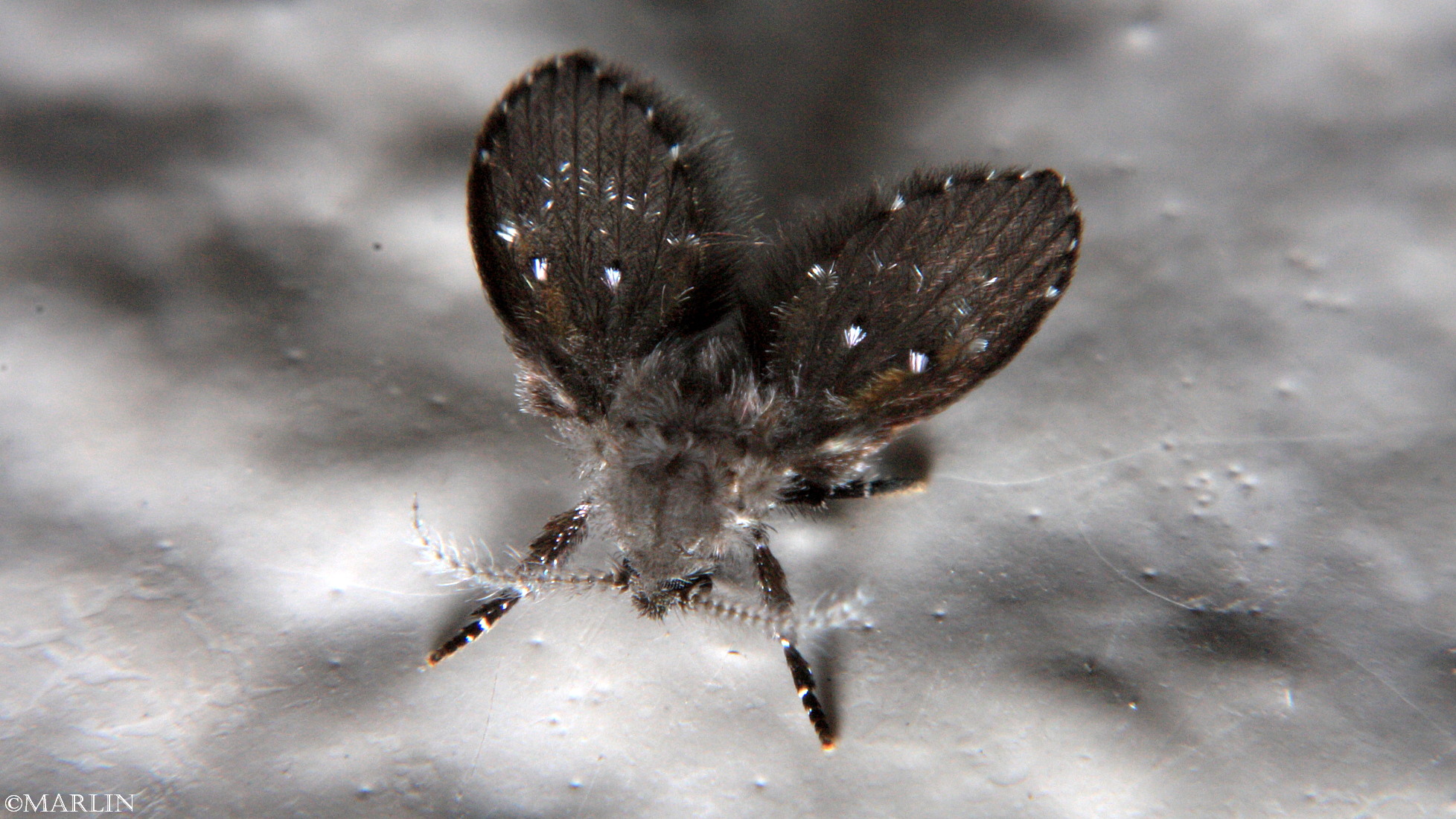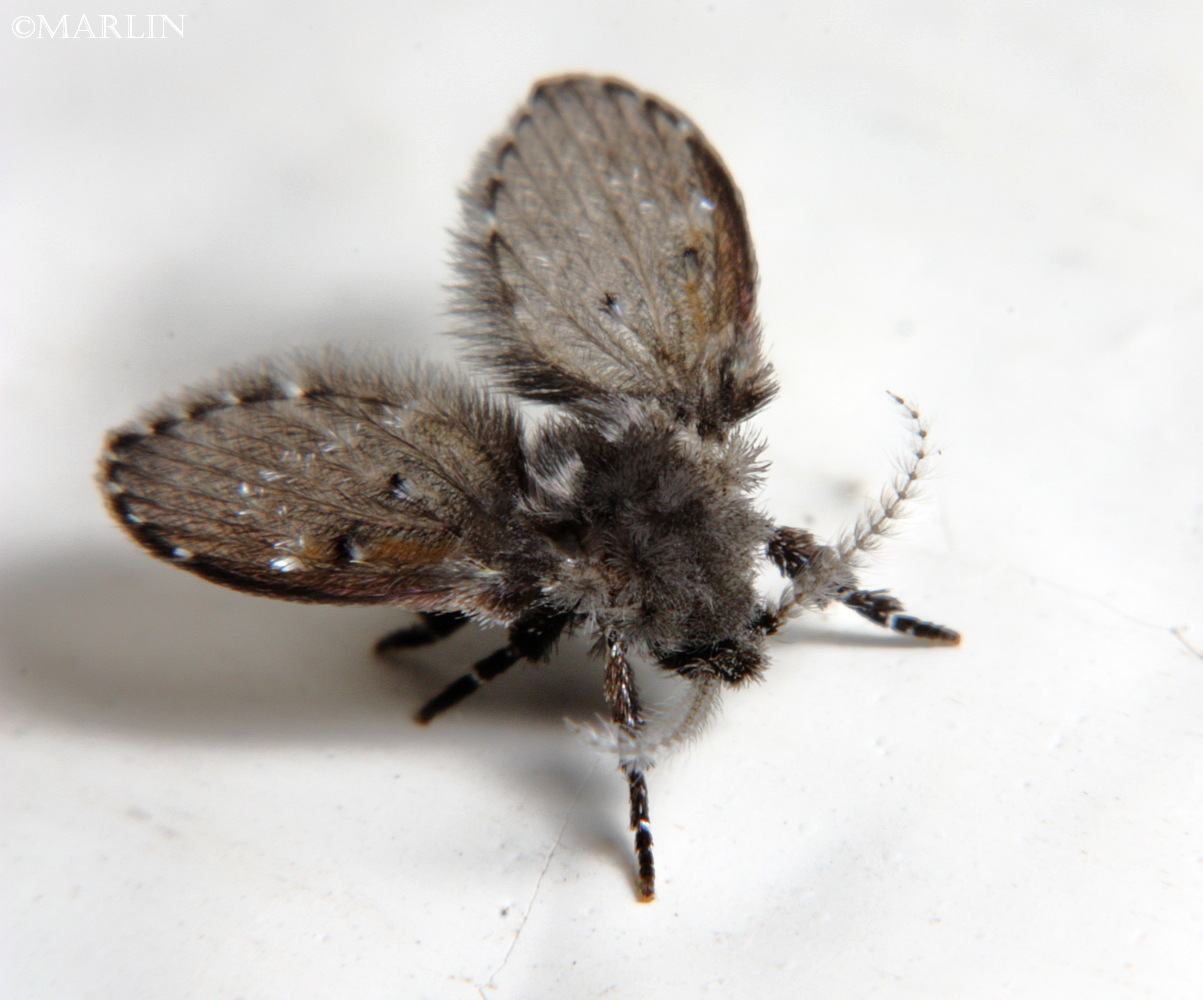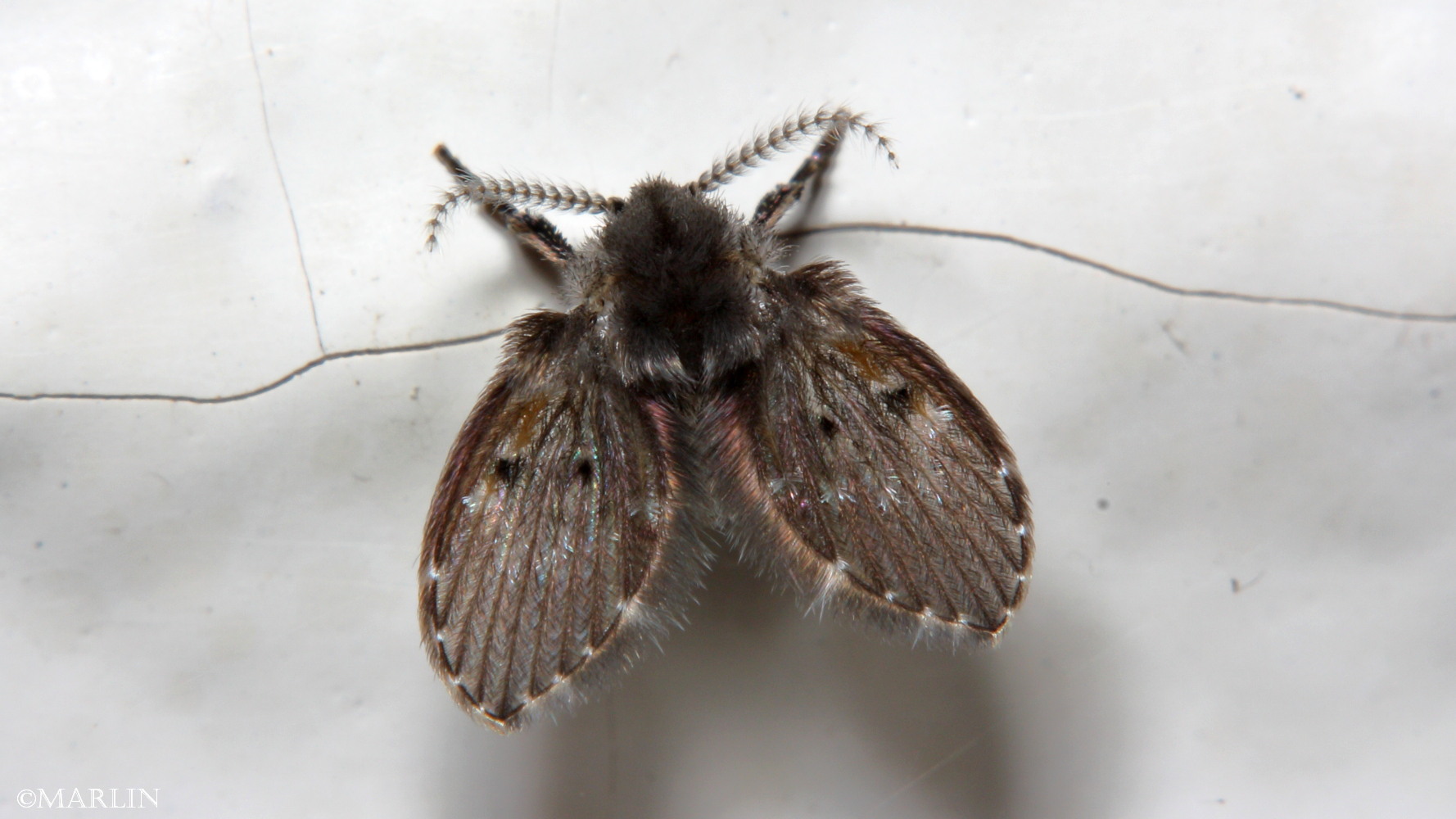Drain Fly / Moth Fly – Clogmia albipunctata
Family Psychodidae – Moth and Sand Flies. Also called filter fly, sewage fly, drain fly. Live adult drain flies photographed at Ogle County, Illinois.
Wingspan = 3-5mm, body = 3mm
This is one of those small dark, creepy flies that reproduce in gelatinous slime that accumulates in various places such as the floor drain in your basement, or an outhouse in the woods (which is indeed one of the best places to find them). They also like to hang out on the walls of a basement shower stall or anywhere there is a neglected drain, especially one without a trap.
As you can see, adult drain flies are covered with dense pile (hair) that gives them a fuzzy appearance superficially resembling a moth – but moth’s wings are covered with scales, not hairs, and moths have 4 wings instead of a fly’s two. The distinctive, 13-segmented antennae are radially plumose, with whorls of hair emerging 360 degrees around the flagellomere.
I think this is a case of sexual selection: the females for whatever reason, assess their prospective suitors by their pubescence and the clarity of their wing markings – exactly as peahens or female birds of paradise choose mates based on the color and extravagance of the male’s plumage (leaving aside for a moment the beauty of their hypnotic mating dance). These characteristics are thereby enhanced over the generations as females, ever susceptible to the vagaries of fashion, choose hairier and more elaborately-marked boyfriends. Sound familiar?
Of course, I’m oversimplifying. Surely there are other advantages to having a pelt. And there must be a point of diminishing returns; no female would want to be with a guy who was so hairy he couldn’t fly, or so conspicuous he fell prey to a sight-based hunter such as a jumping spider or dragonfly.
References
- Bugguide.net, “Drain Fly – Clogmia albipunctata“
Insects & Spiders | Flies Index | Crane Flies | Flower Flies | Bee Flies | Robber Flies



